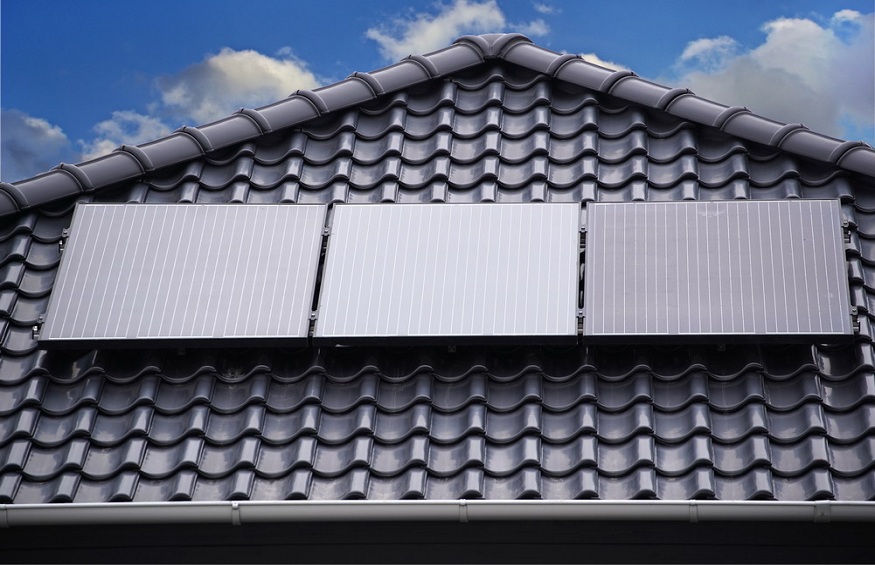Some homeowners hesitate to install solar panels over concerns about aesthetics. Visible roof panels can seem at odds with a home’s architecture and style. But according to the good folk at Vivint Solar, modern home solar panels systems meld beautifully into designs from traditional to contemporary.

Panels Blend with Roof Profiles
Early solar arrays stood out in stark contrast to a roofline, appearing stuck on as an afterthought. But today’s panels are designed with low profiles and colors to blend with different homes. Tilted mounting racks follow roof angles to keep panels streamlined and unobtrusive.
Darker panel colors like black, deep blue and brown fade into shingled roofs, especially from street view where angles conceal the panels. Even lighter colored homes generally mix well with dark solar thanks to angled mounting and shadows. Non-reflective panel surfaces prevent glare.
For flat roofed modern homes, thinner profile panels mount flush and go practically unseen from the curb. Panels above garages or tucked around dormers also effectively integrate with sloped and complex rooflines. A reputable installation company designs each system for the specific roof layout rather than taking a one-size-fits-all approach.
Rooftop Design Options
Strategic panel placement is key to integrating solar arrays with attractive roof design. Grouping panels in neat symmetrical sections helps maintain balance and proportion. Using roof ridges and valleys to “corral” the solar layout prevents a random scattered effect.
Keeping panels closer to the roofline makes them less conspicuous from the front of the house. Lower side or rear roof sections often work better compared to prominent upper roof peaks. But installers should also optimize directional exposure and avoid too much shading from trees or other buildings.
Home additions like garages, porches and sunrooms offer prime solar real estate without impeding the streetscape. Even ground mounts, poles or trellises in the backyard provide aesthetic solar placement away from the main house facade.
Streamlined Rackless Mounting
Standard racking creates visible lines under panels. Newer rackless mounting methods result in a super sleek appearance. Panels lie nearly flush to the roof, maximizing the seamless effect.
With integrated rackless mounts, only the panel edges are visible rather than drawing attention to bulky aluminum framework. Especially on unshingled flat or metal roof homes, low-profile mounts make panels almost disappear into the roof surface.
Considerations for Historic Homes
Special care with solar placement goes even further when integrating renewable energy into historic homes. Keeping panels on inconspicuous rear-facing roof planes or detached garages helps maintain classic architectural elegance.
Smaller groupings of panels on multiple roof sections can be less conspicuous than a large single array. Using mounting colors to match existing roof elements also helps panels blend in naturally.
Consulting local historic preservation guidelines provides important considerations. But many areas do allow thoughtfully designed solar systems that preserve a historic home’s unique design features.
Innovations in Solar Roofing Materials
Instead of applying solar panels to the roof, integrated solar shingles and tiles incorporate photovoltaic material into roofing products themselves. This provides the ultimate seamless appearance and protection in one solution.
Solar roof installations look identical to conventional roof exteriors. But each shingle or tile generates renewable electricity from sunlight. Avoiding any visible panels maximizes aesthetic appeal. However, these integrated products cost considerably more than traditional panels.
Conclusion
Far from detracting from a home’s beauty, more architects now embrace solar arrays as design elements. Solar panels add tech-savvy flair to all modern architectural styles, from prairie to contemporary.
Once dreaded as an eyesore, solar systems now frequently garner neighborhood praise and inspire others to go green. Homeowners thinking creatively about placement, color blending and symmetry discover solar everywhere adds curb appeal and forward-looking style to any home.


